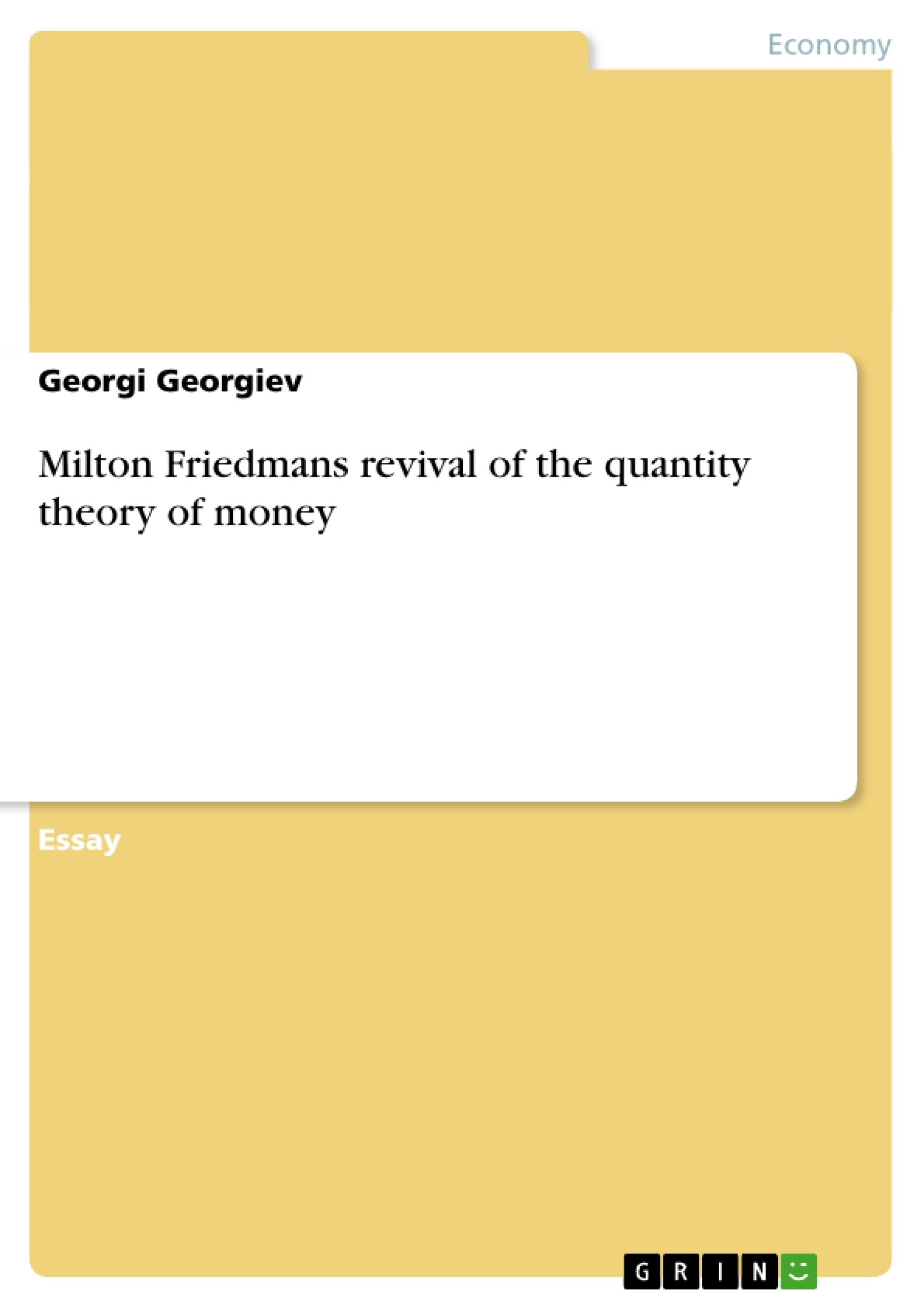Milton Friedman is, without a doubt, one of the most influential economists of all times. Born on 31 July 1912, in New York, he graduated at the University of Chicago and later he served there as Professor of Economics. His research in the field of economics brought him a number of awards,including the Nobel Prize in Economics in 1976,"'for his achievements in the fields of consumption analysis, monetary history and theory and for his demonstration of the complexity of stabilization policyMilton Friedman died on 16 November 2006. January 29th 2007, was declared as Milton Friedman day, honoring his achievements and his influence over the modern economic policy.
Milton Friedman's scholarly contributions are numerous, but the most important are: the critique of the Phillips curve and the introduction of the natural rate of unemployment; the permanent income hypothesis; the stable link between inflation and money supply; the monetarist school of economic thought, and many more, including the revival of the quantity theory of money, the main topic of this paper.
Inhaltsverzeichnis (Table of Contents)
- Introduction
- Monetarism
- "Classical" Quantity Theory of Money
Zielsetzung und Themenschwerpunkte (Objectives and Key Themes)
This paper examines the revival of the quantity theory of money, a key contribution of Milton Friedman. It explores the concept of monetarism and its connection to Friedman's economic theories. The paper also delves into the "Classical" Quantity Theory of Money, highlighting its development by classical economists and its relationship to the determination of nominal income.
- Monetarism and its main features
- The revival of the quantity theory of money by Milton Friedman
- The "Classical" Quantity Theory of Money and its historical context
- The role of money supply and velocity in determining nominal income
- The link between the quantity theory of money and the demand for money
Zusammenfassung der Kapitel (Chapter Summaries)
- Introduction: This chapter introduces Milton Friedman as one of the most influential economists of the 20th century, highlighting his key contributions and achievements, including the Nobel Prize in Economics. The chapter emphasizes Friedman's revival of the quantity theory of money as the main topic of the paper.
- Monetarism: This chapter defines monetarism as a term describing macroeconomics theories associated with Milton Friedman. It outlines the main features of monetarism, including the monetarist transmission mechanism, stability of money demand, money-to-income causality, and the natural rate of unemployment hypothesis. The chapter also discusses the superiority of monetary policy rules over fiscal ones within monetarism.
- "Classical" Quantity Theory of Money: This chapter delves into the "Classical" Quantity Theory of Money, explaining its development by classical economists in the late 19th and early 20th centuries. The chapter describes the theory as an explanation of how the nominal value of aggregate income is determined and how much money is held for a given amount of income. It highlights the importance of the velocity of money in this theory and presents the equation of exchange, which relates nominal income to the quantity of money. The chapter also explores the assumptions of constant velocity in the short run and the implications of changes in the money supply on the price level.
Schlüsselwörter (Keywords)
The key concepts explored in this paper include monetarism, the quantity theory of money, nominal income, money supply, velocity of money, the equation of exchange, demand for money, and the natural rate of unemployment.
- Citation du texte
- Georgi Georgiev (Auteur), 2006, Milton Friedmans revival of the quantity theory of money, Munich, GRIN Verlag, https://www.grin.com/document/72981



